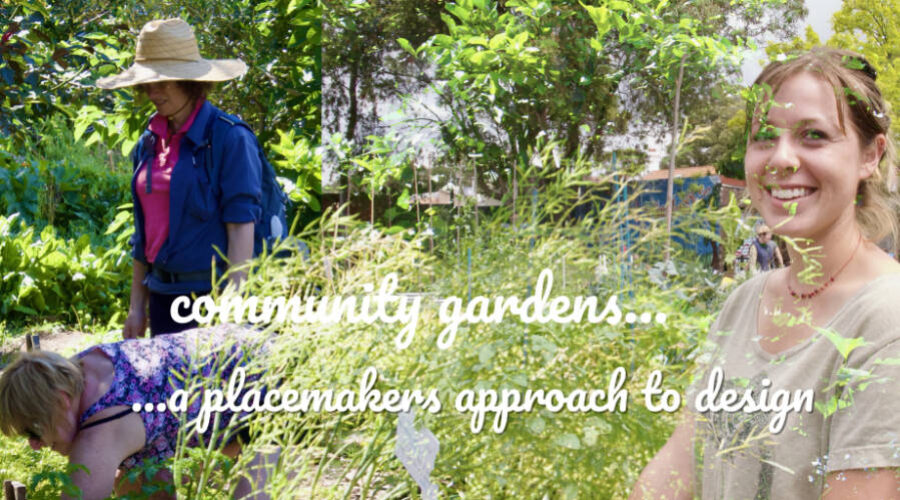Community gardens: a placemaking approach to design
There are different ways to start a community garden. Placemaking offers a way that invites gardeners to participate.
Story and photos by Russ Grayson 2024
Over the 40 or so years of community gardening in Australia we have seen a number of ways by which community gardens get started. Let’s look at some of them.
The institutional approach
There is the institutional approach. In one instance, local people had already asked for a community garden when the council said they would incorporate a small garden with the renewal of an inner-urban park in Sydney’s Redfern. The park was to be redeveloped as a multi-purpose design incorporating different uses spanning the conventional role of urban parks for passive recreation, a playground, barbecues for picnics, a multipurpose lawn area, seating below the trees as a quiet area and, something new as a response to local peoples’ demands, a small community garden.
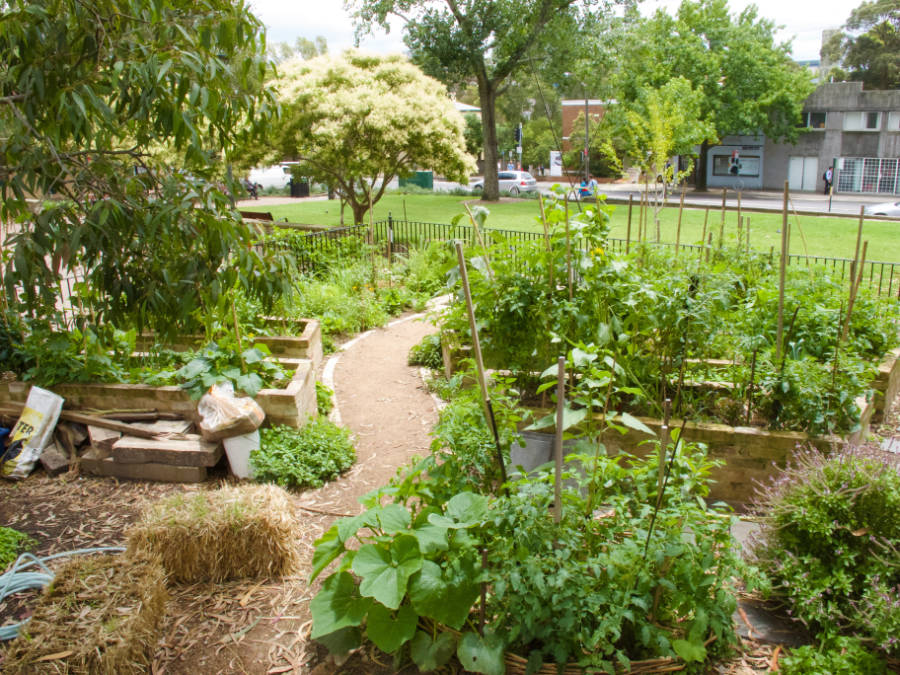
For the would-be gardeners, it was an expedient way of getting the community garden started. Unlike other community gardens, the raised garden beds would be built by council during the refurbishing of the park. This would integrate the garden design into that of the park. The garden was immediately put to use and became a successful installation managed by the gardeners who created an ongoing presence at the times they were there. That contributed to the park being a safe place for the public to linger, passive surveillance is an effective tool for safety in public places. The gardeners also made use of coffee waste from a nearby cafe and combined it into their compost.
This is not all that common a way to create new community gardens, however.
The designer-led approach
In the designer-led approach to starting a community garden is, a landscape designer talks to the gardeners to get some idea of how they would use the space and then goes and designs the layout of the community garden for them. This is a top-down, designer-first model rather than a gardener-first way of doing things. It is more like a conventional approach to landscape design that we could call the designer-client model.
While producing a design that suits the site characteristics, the model does not include the gardeners in the design or construction process other than being consulted about their needs. Sometimes, that might not even happen.
Like the inclusion of that community garden in the park refurbishment in Sydney, the building of a community garden was included in the construction of a publicly-accessible university precinct at Inveresk in Launceston. Designed by the architect the garden came before any community garden group emerged. This is a risky process for an institution, however the Inveresk garden appears to be successful, in-part because it has a paid manager.
People outside the university community can use the garden, as can students. Other community gardens on university campus demonstrate that student-gardeners are ephemeral, there only for their time at the university. They do not create a long term establishing presence as do gardeners who are not students. That is not to say that university community gardens are unsuccessful—the evidence says otherwise—however their presence is variable due to the demands of their studies.

A different approach
In the institutional model, an organisation constructs the community garden. The conventional designer-client model sees the designer learning what a community garden group wants, then goes ahead and designs it. In the placemaking approach we invert that process.
Here, we set out with the idea of creating a place, not a design. Design comes later. We start with a vision, not a plan. We involve as many people who have shown interest as possible. Placemaking is a people-centric approach.
In the placemaking model of community garden development we are reinventing a space as a place. There is a difference. An urban space is a geographical location and may or may not be inviting to spend time in and may or may not be well-used by the public. An urban place is a location where people want to be. A place offers opportunities. A place is social.
Placemaking as an approach to community garden development is frequently the model that community gardeners use in getting their garden started, even though most are unfamiliar with placemaking in urban infrastructure design and have probably never heard the word. People decide how they want to use the place. Drawing up a design comes later to fit the proposed uses into the available space and to integrate the components of the garden into a cohesive plan. It is a participatory process that involves more than making a landscape design on a piece of paper or computer screen.
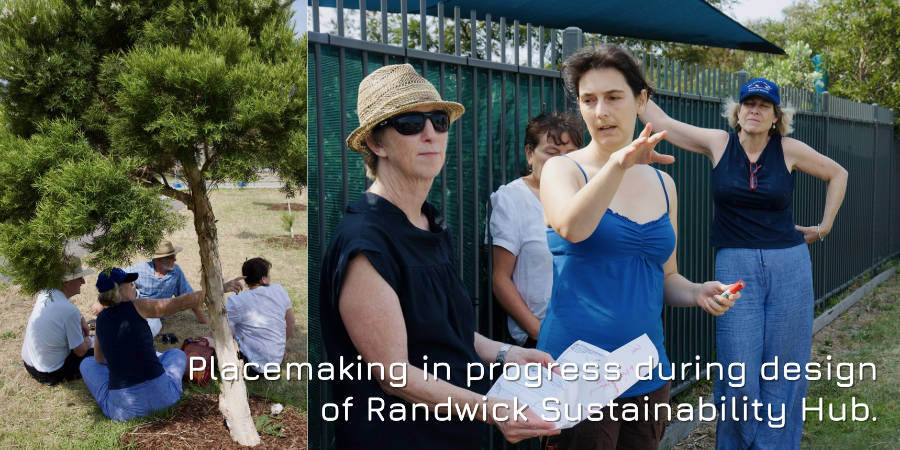
Placemaking recognises that a community garden is more than a garden. It is a social place where people will take responsibility for a piece of urban land, where they will interact, cooperate, make friends and learn. It is a safe place where people will want to be.
Exchange is a key design criteria in the placemaking approach. Exchange and opportunity are the primary reasons that towns and cities exist, and that is reflected in the urban microcosm of the community garden. Public spaces like this are those places where social and educational exchanges occur, where celebrations take place, where friends and cultures mix. The more activities that are going on and that people have an opportunity to participate in, the more socially viable the community garden and the more likely it is to persist through the changes in participants the garden will go through.
Gardens as third places
A part of our placemaking approach to getting community gardens started lies in
recognising that the gardens are ‘third places’ in our towns and cities.
Third places are locations where people meet and socialise. According to sociologist Ray Oldenberg who wrote The Great Good Place, a book about third places, the idea is based on how much time people spend in a place:
- the first place, the home, is where most of our time is spent
- the second place is usually the workplace, where a lot of time is spent but less than in the home
- a third place is a public, social place where people go to be with others or to be alone; third places are affordable to visit, are close by, convivial and are locations where people feel safe to be in.
Examples? Cafes, where people meet with friends. Other commercial premises can serve as third places, such as hotel bars. Non-commercial third places include public parks, community centres and town squares. Parks provide opportunity for people to relax and decompress from demanding working lives, for families to play, for neighbours and friends to meet and for people to find solitude. Among the opportunities they offer are childrens’ playgrounds, barbecue facilities, lawn for sitting/picnicking/play, trees for shade, fitness equipment, seating, plantings and, sometimes, sports facilities like tennis courts. Parks are necessary for human health. Some also offer community gardens.
In his 1989 book, The Great Good Place, American author Ray Oldenburg says that third places are important for civic engagement and for establishing a sense of place in the city. That is also what community gardens do.

Making community gardens into third places
So, how do we create community gardens as third places in our towns and cities?
At the planning stage of community garden development we make use of the placemaking approach before we start on the formal landscape design phase where we plot the location of components on a plan. Where gardeners lead the process, they address key questions:
- how do we measure the site, identify how sunlight moves across the site through the year, how winds and runoff during heavy rain affect the site, find out what kind of soils we have and learn about other characteristics of the site?
- how do we want to make use of the garden?
- what components do we want on-site to support our proposed uses? (eg. garden beds, shelter, compost, storage shed, barbecue, firepit, seating, chickens etc)
- where do we locate these components on the site?
This is a collaborative, negotiated process and advice from experienced community gardeners or Community Gardens Australia might be sought. We might call this the visioning phase, the part of the design process that identifies and then locates the functions we want on the land. Again, the process is gardener-led rather than being led by a professional designer. We are talking about gardeners as designers.
Placemaking principles in community garden design
Reverse the public retreat
In placemaking we reverse the psychological and physical retreat from poorly designed and managed public spaces by bringing people in to populate them. Perhaps they avoid the space because of its shabby appearance or the presence of undesirable characters. As in ecology, so in public urban space: an empty niche is soon occupied. When the public retreats from a location they leave it open to an invasive species that is perhaps of the socially undesirable kind.
Public retreat from a pocket park is what happened in Redfern. People hurried through the park because of the drinkers who were a constant presence there. When local people got together and asked if they could build a community garden in the park the council had the opportunity to repopulate it. The gardeners were allocated half of the park and went ahead and built the garden. With the niche now occupied by a new species, the drinkers moved on and the park was reclaimed by local people. The community garden brought people in to reoccupy the space and turn it into a place where they could get together and engage in meaningful activities that benefited them as well as the neighbourhood.
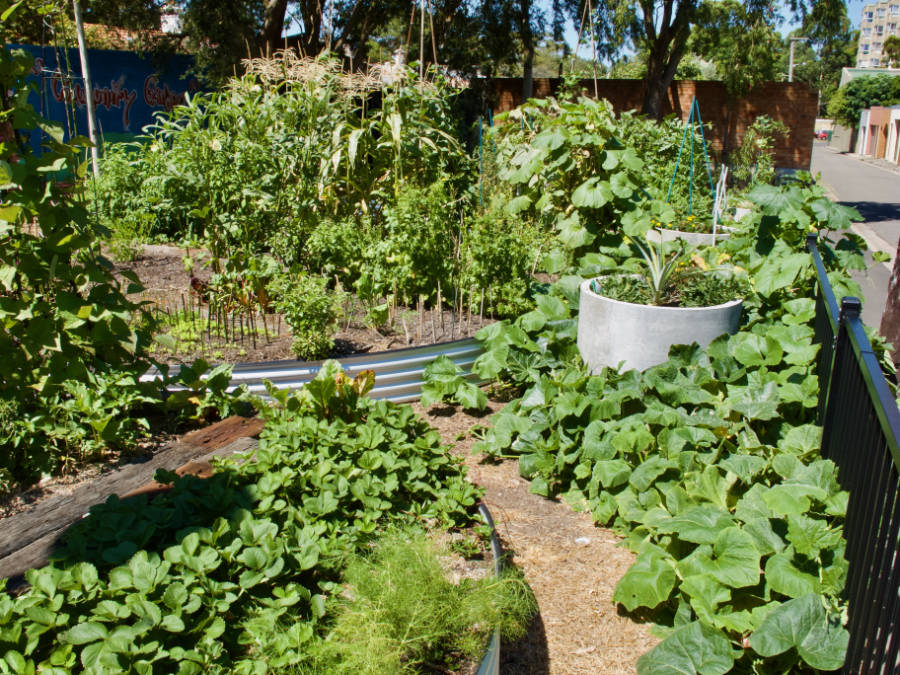
The question in placemaking is what could we do with unwelcoming spaces that would make them welcoming—and used—by the public? Sports facilities do this but only at certain times of the week, and they offer only one type of activity. At other times they stand idle and empty. What we need is something that people can come to when they feel like it.
A third place such as a community garden needs to be:
- accessible on foot, bicycle or public transport or by only a short vehicle journey
- have a welcoming, low-key ambience
- be free or low-cost to visit
- preferably accessible by people with mobility limitations
- child and family-friendly
- safe—a minimal risk of crime
- free of graffiti (other than that which might constitute an artwork)
- free of dodgy characters (just a note: I have spoken with homeless people tenting in city parks and found none of them to present a public danger, although I recognise that might not always be the case; my point is that appearance does not necessarily indicate a threat and that homeless people retain the full rights of citizenship).
Social status is irrelevant in a third place. This encourages a sense of commonality. Third places also have regulars, establishing presences who frequent the place more often than others. They contribute to the tone of the place and help people new to it. An outstanding example of an establishing presence is David Stephen in Hobart, Tasmania, after whom a community garden has been named. David, now in his eighties, shares his lifetime of organic gardening experience with a number of community gardens in the Hobart region.
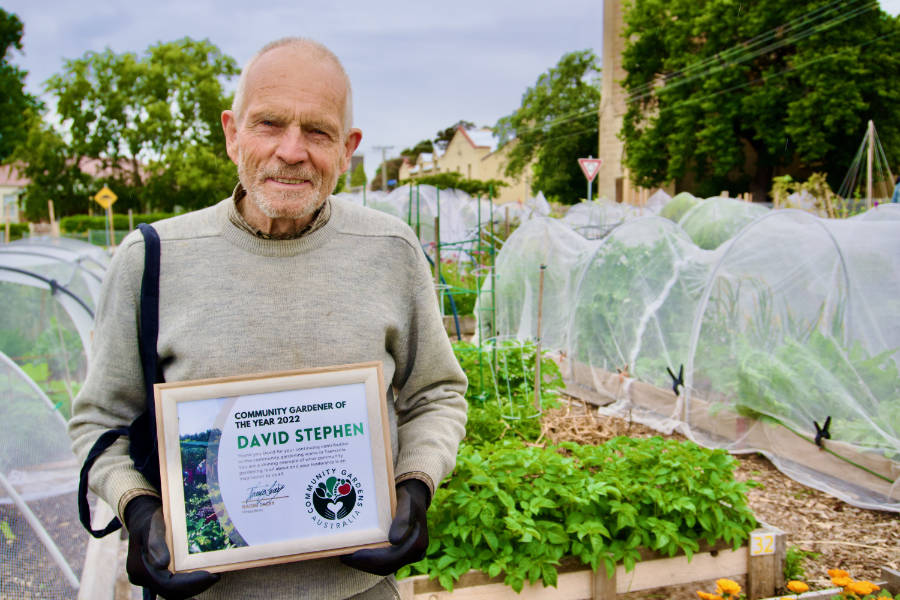
When it comes to personal safety in public places it is also worth noting that people in or overlooking public places are the best form of surveillance for public safety, more so than street cameras. It was for this reason that the council I worked as community garden coordinator with asked people engaged in an edible footpaths project to leave space between the small fruit trees they planted so that people in the houses had a view of the street. It is for the same reason that community gardens which are open to view from the street so that local people can see into them, as well as the presence of the gardeners, provide that passive surveillance that increases public place safety.
Community gardens with a clean, organised appearance are attractive as third places. We are talking about perception here although gardens that look wild can also be productive. The Angel Street Permaculture Garden which occupies an isolated and previously-disused area of a high school in Newtown in inner urban Sydney comes to mind. Its jungle-like appearance is due to its design as a food forest consisting of trees and shrubs on the slope and garden beds on the flat area where they are visible to passers-by.
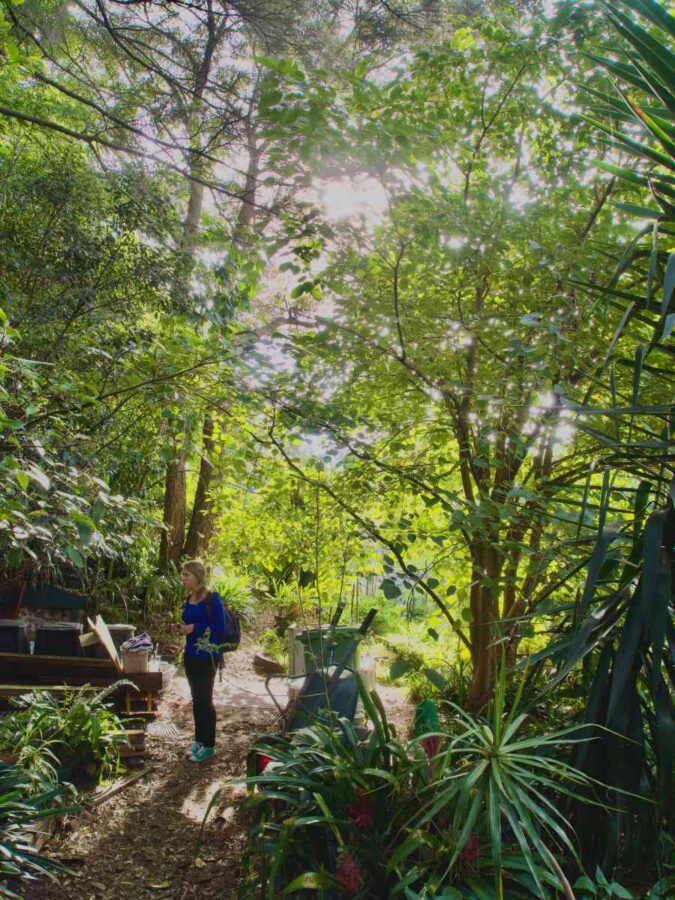
A well-designed sign at the entrance that carries the name of the garden, contact details, meeting times and some indication of what goes on there adds to the welcoming presence of community gardens as third places.
Make people feel at home
After people work out what they want in the community garden, the garden plan places the functions in the landscape with regard to sunlight access, shelter for plants from strong and damaging winds, the soils in the garden, drainage and terrain (as in its orientation to sun, slope, presence of moist areas etc). Once drawn up, the plan and accompanying planning notes set the guidelines for the future development of the community garden.
During the visioning and planning phases we work out how to make people feel at home. Erecting a shelter like a pergola and tool storage shed is a good start. The pergola is where people will sit and talk, propagate seeds and share food. It is the social heart of the community garden.
Making people feel safe and welcome is also done by the aesthetics of the garden. Uncluttered and smooth pathways (also a risk reduction measure), plenty of flowering plants and sitting places throughout the garden are ways of achieving a pleasing aesthetic. Some gardens plant flowers along their front fence to create a colourful and friendly vibe for local people passing by.
Having someone who welcomes visitors and tells them about the garden, its purpose and what goes on there is a worthwhile way to build positive relations with local people and others.
Feed the senses—taste, touch, visual, smell
How do we do this? Visual, we do with flowering plants—annuals and perennials, but they are not there just to make our community garden look pretty. Those with a little botanical knowledge know that the colourful flowers we plant throughout our gardens attract pollinators and beneficial insects and that these benefit the plants in the garden as part of our integrated pest and plant disease management strategy. The visual sense is fed by the use of different plants with their colour, size and texture.
Smell? That’s the realm of our herbs. Touch and smell or touch and taste are safe things to do in our gardens because we will not be growing plants that are poisonous or irritant.
Design a main path that connects all of the main components of the garden—the growing beds, pergola and storage shed, orchard area, compost, propagation area and so on. Linking components like this creates a sense of unity in the garden as we as providing convenient access.
Those garden members with artistic tendencies might add features that feed the visual sense in the garden by being both decorative and functional, such as sculptures, mosaic works, small ponds and so on.
It is said that gardens that look good work good too. Why? Because good visuals indicate good maintenance and management.

Slow the people flow. Install linger nodes
Let me draw upon Fiona Campbell’s work in developing a regional park as part of her local government role. Faced with a big empty field, she had sandstone blocks and seating placed below a stand of trees to create a linger node, a sheltered location with the ambience to encourage people to stop awhile. People linger here, sitting on and around the blocks, picnicking, talking with friends. On another part of the site, a new plaza with a vine-covered pergola, seating, and which merges with a garden of hardy native and exotic plants and with trees that will grow to cast shade, reinvented an unused patch of dwarf ornamental trees as a social place.

Like this, we can place linger nodes in our community garden. The main one would be the pergola that offers shelter from sun and rain. Additional could be informal benches and sitting stones as places for individuals to sit quietly or with friends. Under a shade tree is a good location for a linger node.
We can think of linger nodes as inviting places for people to gather or for individuals to find solitude. They help people feel at home in their community garden.
Make people feel at home
People feel comfortable and at home in well-maintained gardens. Linger nodes and a visually enticing garden with its own conflict resolution and democratic decision-making processes make people feel at home in the garden. It becomes a place that people want to come to. Child-friendly and safe makes it inviting to families.
Adopting a process for decision-making that is inclusive of all who want to participate is important to good relations between members. This was a focus for Community Gardens Australia Sydney team in offering a plan-of-management development assistance process. The plan was worked through as a workshop with people wanting to start community gardens.
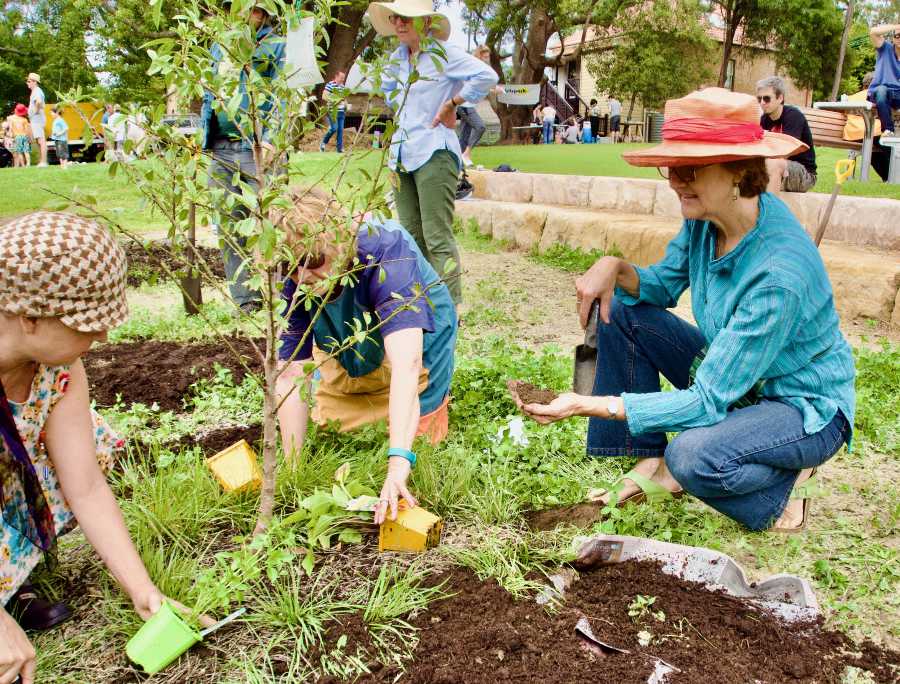
Focus on exchange
Exchange, like social contact, learning, sharing expertise, sharing plants and seeds, stems from making people feel at home and slowing the people flow.
Cities are all about exchange. Exchange of all kinds as well as opportunity is one of the reasons that cities evolved. As components of cities and towns, community gardens are prime locations for the informal exchange that creates opportunity and connection and the spontaneous ideas that spring up when people get together.
Gardeners might want to reach out to the local community with exchange opportunities like plant and produce swaps as well as with free workshops to improve home gardener skills.
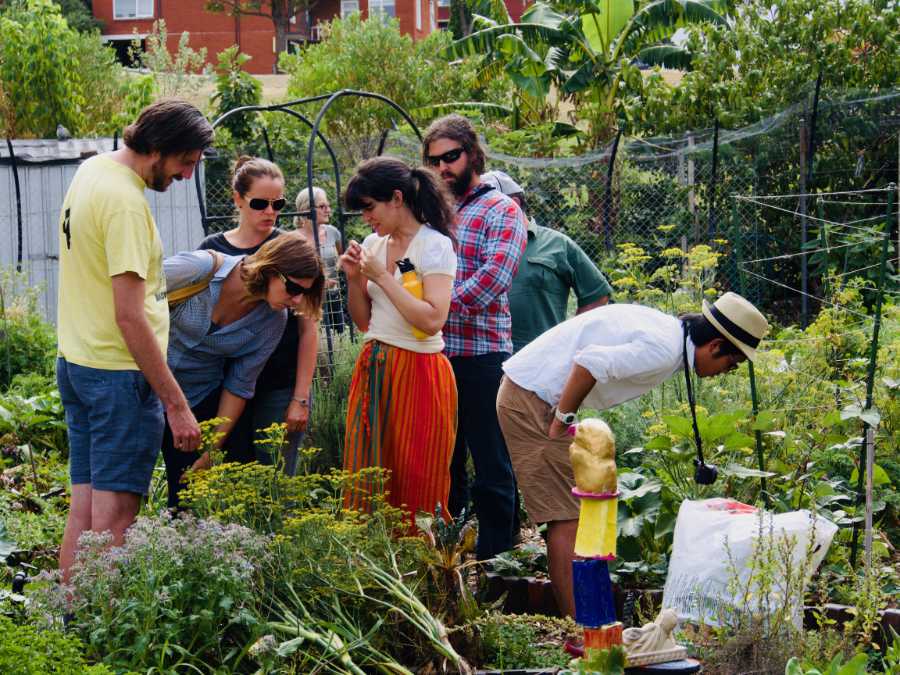
Expand the experience envelope
Making available a range of experiences in the community garden is a way to increase the value of the garden not only to members but also to the local community. We can accomplish this through:
- offering gardening opportunities
- workshops in gardening such as garden design, plant propagation, seed saving
- setting up an ‘arts in the community garden’ group such as Mary McConnell established at Randwick Community Garden in Sydney, and offering workshops in the arts
- Mary also set up poetry readings in the community garden, giving local poets the opportunity to present their work
- organising tours of the community garden for local people, community organisations and community gardeners from the wider region
- making the garden available to community workers for access by their clients, such as aged people
- setting aside a small area for use by a local school as an outdoor classroom where introductory horticulture, botany and sciences are taught
- establishing a program for people feeling socially isolated where they can meet others and learn some horticultural skills.
Expanding the experience envelope requires volunteer commitment and an outlook that focuses on improving the local area. It will not be for all community gardens, more for those with the space, available skills and a community development motivation. The Permaculture Interpretive Garden at the Randwick Sustainability Hub, a local government project, and the work of Northery Street City Farm in Brisbane serve as inspiration.
An approach to expanding the experience envelope is to focus on small components in design and doing something imaginative with them that can positively influence the feel and appearance of a place, and how people think about it and interact with it.
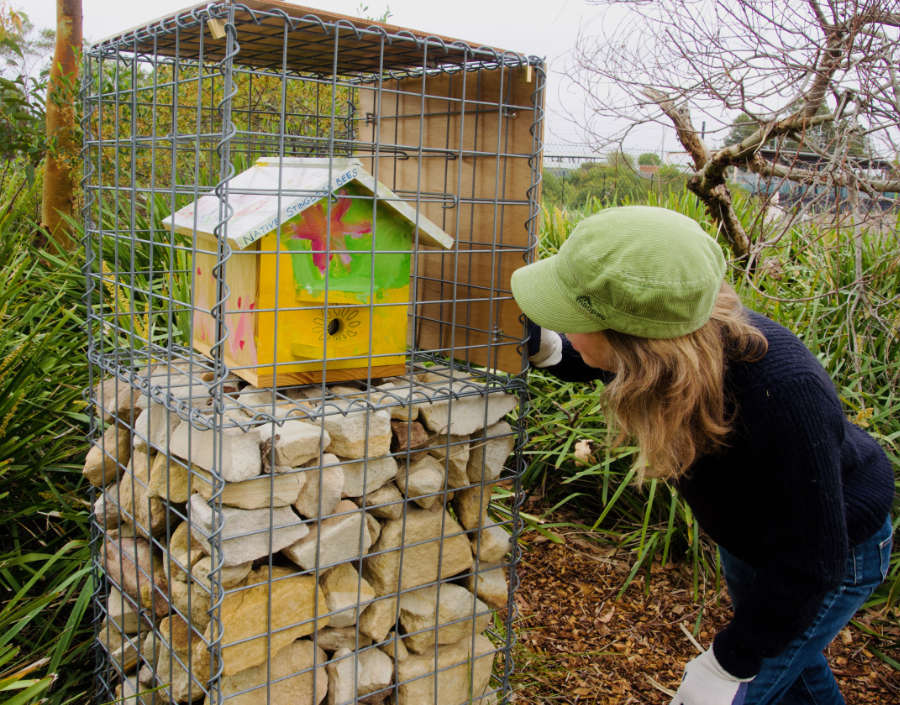
Third places of the horticultural kind
Envisioning our community gardens as third places opens us to reimagining the role of community gardens in the city.
It is up to garden members whether their community garden is a place simply for food production or whether it takes on a wider educational and social role. Whichever, community gardens are valuable third places in our cities and towns where people come together in a spirit of cooperation to create something that is more than the sum of its compost system, fruit trees and garden beds.
Reading
- The Great Good Place: Cafes, Coffee Shops, Bookstores, Bars, Hair Salons, and Other Hangouts at the Heart of a Community; Ray Oldenburg, 1999; Da Capo Press, USA; ISBN 1569246815.
- Third place; 2024; Wikipedia https://en.wikipedia.org/wiki/Third_place
Bio note
Russ Grayson was one of the crew that started Community Gardens Australia. He has developed community garden enabling policies for local government and, when Community Gardens and Landcare Coordinator for the City of Sydney, did training in placemaking with Australian placemaking consultant, David Engwicht.


